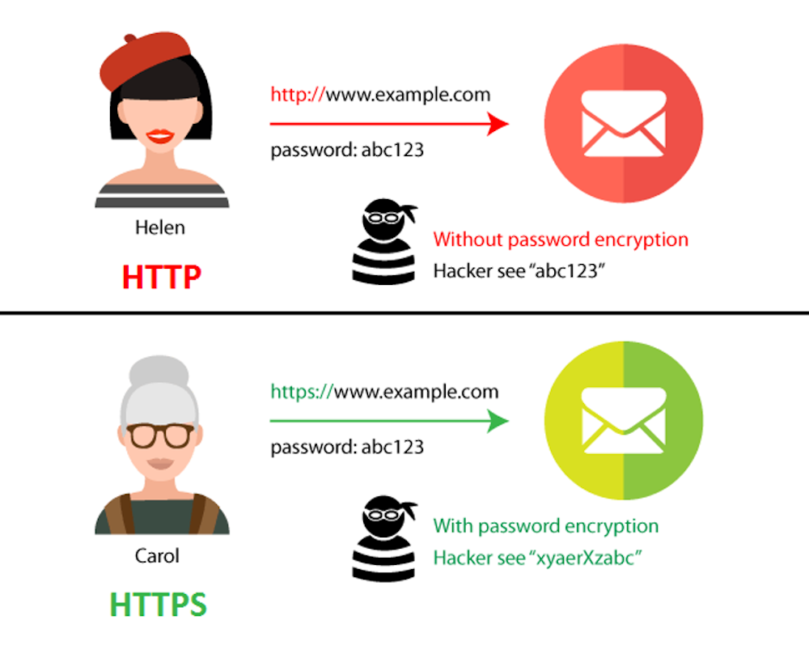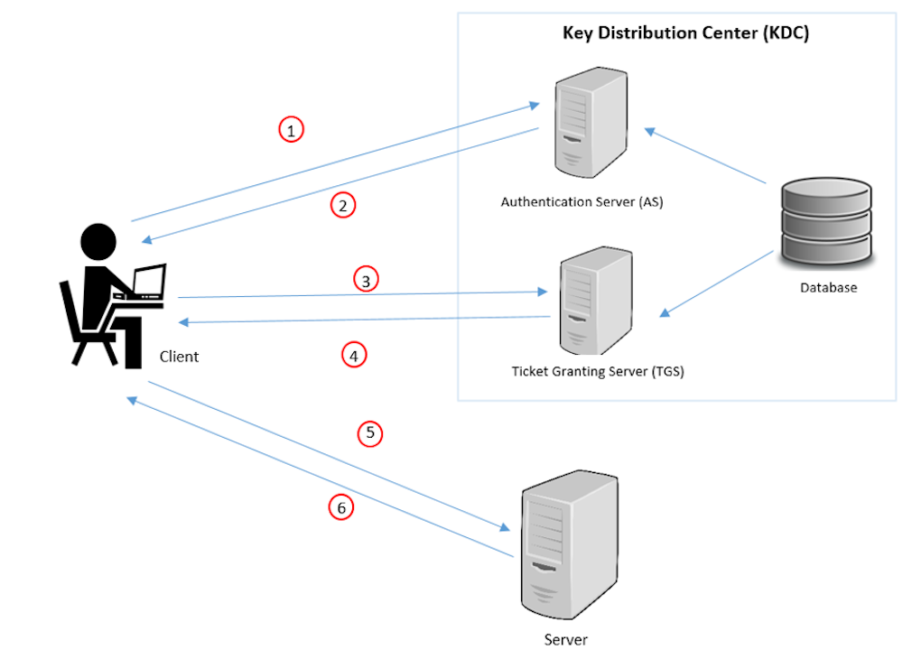HTTP and HTTPS are very different, and modern-day blogs and websites need to pay attention as this can greatly affect their rankings, among other things. As a web user, you may have noticed that more and more websites have been shifting to HTTPS over the last few years. If you are wondering what is fueling this HTTPS adoption trend, then you have come to the right place.
In this article, we will take a look at everything you need to know about HTTP and HTTPS, including:
- The differences between HTTP and HTTPS
- Why it may be worthwhile to switch to HTTPS
- The steps to take in order to make the switch to HTTPS.
But first, the basics…
What Is HTTP?
HTTP stands for Hypertext Transfer Protocol. It is the main protocol used for data transfer between browsers and web servers.
In short, the HTTP protocol allows for communication between different systems and gives users the ability to view webpages. It was used for almost all early websites.
To give you an example of how HTTP works, when you type a URL in your browser, an HTTP command is sent to the webserver. It directs the server to fetch the requested page and transmit it. As a request-response protocol, HTTP allows users to interact with web resources like HTML files by transmitting simple hypertext messages between servers and clients.
The problem with the HTTP protocol is that there is no encryption of the information flowing between the browser and the server.
This means that the information can be easily intercepted, tampered with, or stolen.
What Is HTTPS?
HTTPS stands for Hypertext Transfer Protocol Secure. It is basically an encrypted version of HTTP. This protocol protects the communication between your server and your browser and keeps attackers from intercepting or tampering with it.
This provides integrity, authentication, and confidentiality to traffic on the web. If a website shows a lock icon in its address bar, it means that the site is using HTTPS.
HTTPS takes care of the security issues of using HTTP by using a Secure Sockets Layer (SSL) certificate.
It creates an encrypted and secure connection between the browser and the server and protects potentially sensitive information from bad hackers (as opposed to growth hackers 🙂 ).
Here’s an analogy that can help explain how HTTPS works:
Using HTTPS can be likened to sending an object of value in a locked combination box that is indestructible. Only the sender and the receiving party know the combination, which means that even if attackers get a hold of the box they will not be able to get inside.
HTTP vs. HTTPS Performance: Which Is faster?
HTTP data is transmitted in plain text. While this means that anyone intercepting the data in transit will be able to see it all without putting any additional effort, it also means that HTTP is faster because it’s easier.
HTTP pages are stored on computers and internet caches, so they are quickly accessible. With HTTPS, the browser has to do some extra work in order to enable a secure connection. This makes the initial request slower.
Despite the headstart that HTTP gets in downloading and presenting a webpage, HTTPS websites tend to perform better.
How Does HTTPS Authenticate Servers?
As you have seen so far, the SSL certificate is the main difference between the HTTP and HTTPS protocols.
HTTPS is basically just an HTTP protocol that comes with additional security.
Having said that, this extra security is vitally important for websites, particularly those that handle sensitive data from their users, such as passwords and credit card information.
HTTPS works in a very simple way to authenticate servers. The SSL certificate encrypts all the information supplied by users on the website, essentially translating the data into an unbreakable code.
This means that even if someone manages to intercept or steal the data that has been communicated between the sender and recipient, that person would not be able to understand any of it because of the encryption.
HTTPS is also secured via Transport Layer Security (TLS). This is a protocol that provides additional integrity for data and helps to prevent the data that is being transferred from being corrupted or modified.
The TLS protocol provides authentication which is used to prove to users that they are indeed communicating with the intended site.
The HTTPS Server Authentication Process, also known as the “Client Handshake” is as follows:
First, the client and server hello messages are exchanged. The SSL/TSL handshake is where each of the two connections is established. Then, the server requests a presentation of the certificate from the client. After the server verifies it, the encryption is done through symmetric encryption.
Advantages of HTTPS Over HTTP
The answer to that question is simple: HTTPS is better. It comes with the major advantage of making your website as secure as possible.
However, even for websites that don’t deal with potentially sensitive information, HTTPS offers a wealth of other benefits that we will take a look at below:
1. HTTPS is a Google ranking factor.
Google includes HTTPS as a ranking factor. The search giant itself announced that websites that switch to HTTPS will receive a small bump in rankings. So, by switching from HTTP, you can increase your website’s rankings — maybe not to the first page but it’s all part of the greater SEO strategy that can get you there.
This is an easy and fast way to boost your SEO efforts. In addition to getting a rankings boost from Google, you may also be able to increase your website’s ranking over time since visitors will be more likely to browse through your website if they know it’s secure. And with SEO being more important now than ever, it’s a tangible step you can take.
2. HTTPS means more effective analytics.
Using HTTPS on your website will also make your Google Analytics a lot more effective. With HTTPS protocol, the security data of the sites that referred to you are saved, whereas, with HTTP websites, the data isn’t saved. It simply appears as “direct traffic,” which presents a major disadvantage for HTTP with regards to SEO.
3. HTTPS signals increased trust.
Switching to HTTPS on your website is great for building trust with visitors. Since all site communication is encrypted, your visitors will get protection on their sensitive information as well as their browsing history.
Most people these days are put off by sites that don’t protect their privacy as they browse web pages, download lead magnets, sign up for newsletters, or purchase things online. It is reported that over 84% of online shoppers will abandon their purchase if they do not see the little “secure” padlock next to the URL.
4. HTTPS allows AMP page creation.
Yet another amazing benefit of having HTTPS on your website is that it allows you to create AMPs (accelerated mobile pages).
This is a sort of stripped-down HTML that Google created to help load content on mobile devices at a faster rate.
Google features AMP stories and content prominently on its results pages in order to create an improved mobile experience for users. Switching to HTTPS is something you absolutely have to do if you want a mobile-friendly website.
Keep in mind also that page load speed is one of many factors playing into Google’s up-and-coming page experience update, which is believed to have a significant impact.
How to Switch from HTTP to HTTPS
If you have a website that is running on HTTP and you are considering making the switch to the updated protocol, the complexity of the migration will depend on a few factors, such as:
- The complexity and size of your website.
- The kind of CMS that you use on your site.
- Your hosting or CDN providers.
- Your level of technical skill or ability.
Although there are many variables at play, owners of small websites that run on popular CMS and have solid hosting should be able to do the migration on their own, but it’s always best to use a professional.
You can use third-party companies where you can purchase an SSL that you must then set up manually on your FTP. Afterward, you will have to set up a redirect that tells any browser trying to access the old version of your website to access the HTTPS instead.
You must check the documentation of your CMS/CDN/server/hosting and then proceed accordingly.
There are a lot of steps to execute, so it’s best to create or follow a detailed checklist for your migration.
Alternatively, you can talk to your hosting company about issuing and installing an SSL certificate for you.
No matter which option you choose when switching from HTTP to HTTPS, it’s vital that you proceed with caution in order to ensure future-proof implementation.
If you’re looking for a company to create a website for you, make sure to ask them if they create their sites with HTTPS so you can avoid the need for migration.
HTTPS Mistakes That Can Hurt Your Rankings
There are certain things that you need to pay attention to, and it’s important to get this right so that you don’t hurt your rankings and continue to make extra money each month with your business.
Below, we’ve listed four of the most common HTTPS migration mistakes that may happen even if you followed the entire HTTPS migration list to the letter:
Mistake #1: HTTP pages still remaining.
The first thing you need to do after the migration is to ensure that all your website’s pages are now on HTTPS.
To discover any leftover HTTP pages, simply crawl your website thoroughly using a tool like Ahrefs Site Audit. Make sure that the crawler has all the necessary URL sources so that it does not leave any pages behind.
After the crawl is done, you can then export the list of HTTP URLs and redirect them to the new protocol to complete the migration.
Mistake #2: HTTPS pages containing HTTP content
This mistake happens when the initial HTML file has been loaded using HTTPS yet its resource files (JavaScript, CSS, images, etc.) have not been updated to the new protocol.
If you are facing this issue on your site, you will see it in the internal pages reports, as well as in the crawl overview. All warnings, notices, and errors in Site Audit contain a detailed description of the issue, as well as advice for how you can go about fixing it.
Mistake #3: Internal links not updated to HTTPS.
If your internal links are not updated to HTTPS, it can cause unnecessary redirects.
As an example, if you have a profitable YouTube channel and you direct people from the description of your videos to your website, but the links you have in the description are pasted as:
http://www.YourWebsiteGoesHere.com, they will then redirect to https://www.YourWebsiteGoesHere.com.
Though it’s better than landing on HTTP pages, these mistakes are easy to spot and fix.
Look in Site Audit, under the “Links” report. Once you’ve found the URLs, simply rewrite them to https:// and you will be done. Keep in mind that this is only applicable if you have already ensured that there are no HTTP pages left (see Mistake #1).
Mistake #4: Tags not updated to HTTPS.
The two types of tags that you may be using on your site, open graph tags and canonical tags, also need to have their URLs updated to HTTPS.
If you optimize your posts on social media using open graph tags, they need URL tags as required by Facebook.
Canonical tags show Google and other search engines which page you consider to be the most authoritative from a number of duplicate or similar pages. If you point to an HTTP version of a page, this is a bad signal to Google and it’s likely to be ignored.
You can use the “Page Explorer” feature on your site audit tool to find pages with HTTP open graph and canonical tags by setting up a custom filter and then rewriting the pages you discover to https://.
Checking for the four potential mistakes listed above doesn’t take time and most of the mistakes are relatively easy to fix even for people without vast technical knowledge. This article goes into a lot more detail on the process.
HTTPS Will Soon Become the Norm
The bottom line is that using HTTPS will soon become the norm. As a website owner, you need to make plans to migrate sooner rather than later so you can begin to enjoy the many benefits that come with making the switch from HTTP to HTTPS.
About the Author
Ron Stefanski is a marketing professor and online entrepreneur who’s passionate about helping people create and market their own online business. You can learn more from him by visiting OneHourProfessor.com
You can also connect with him on YouTube, Linkedin, or in his Facebook community.
Related Articles
-

8 Best Social Proof Examples to Inspire Your Business
-

5 Low-Cost Google Marketing Strategies to Grow Your Business
-

18 Ways to Increase Your Online Presence (+3 Extraordinary Examples)
-

5 Customer Testimonial Examples We Love (& How to Copy Them)
-

8 Absolute Best Chatbot Ideas for Businesses in 2024 (+Quick Tips!)









